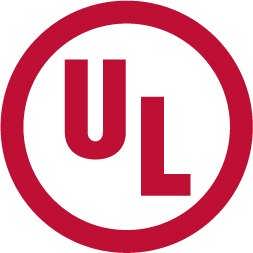Ul is the abbreviation for Underwriters Laboratories Inc. in the United States. The UL Safety Testing Institute is the most authoritative organization in the United States and also one of the largest civilian organizations in the world engaged in safety testing and certification. It is an independent, for-profit professional organization that conducts experiments for public safety. It adopts scientific testing methods to study and determine whether various materials, devices, products, equipment, buildings, etc. pose a threat to life and property, and to what extent; Determine, write, and distribute corresponding standards and materials that help reduce and prevent losses to life and property, while conducting factual research services. UL certification is a non mandatory certification in the United States, mainly for testing and certification of product safety performance, and its certification scope does not include the EMC (electromagnetic compatibility) characteristics of the product.

(1) Why do companies need to obtain UL certification?
1. The entire US market places great emphasis on product safety; When consumers and purchasing units choose products, they will choose products with UL certification marks.
2. UL has a history of over 100 years, and its safety image is deeply rooted in consumers and governments. If you do not directly sell products to consumers, intermediaries will also require products to have UL certification marks to make them popular.
3. American consumers and purchasing units have more information about a company's products.
4. More than 40000 federal, state, county, and municipal governments in the United States recognize the UL certification mark.
(2) UL certified UL2703 installation system for flat panel photovoltaic modules and panels, installation equipment, clamping and fixing equipment, and scope of use of grounding pads:
2.1 The UL2703 standard includes rack mounted systems, installation of grounding/connection components, and fixtures/fixtures for specific (manufacturer/model identification) flat panel photovoltaic modules and panels that comply with the UL1703 standard for flat panel photovoltaic modules and panels, or photovoltaic (PV) module safety qualification standards - Part 1: Structural requirements, UL61730-1 and photovoltaic (PV) module safety certification standards - Part 2: According to national electrical regulations, ANSI/NFPA 70, and building model regulations, testing requirements comply with the provisions of UL61730-2, designed to be installed on buildings or integrated with buildings, or can be installed independently (i.e. not attached to buildings). When the bonding/grounding of a specific module or framework has been evaluated or the installation of the module to framework has been evaluated, the system, components, and/or equipment evaluated according to this standard can be used for grounding and/or installing PV modules that comply with ul1703. The system, component, or device being evaluated.

2.2 These requirements cover rack mounting systems and clamping devices intended for use with photovoltaic module systems with a maximum system voltage of 1000 V.
2.3 These requirements only relate to the rack installation system, clamping devices, fixing devices related to grounding/bonding paths, mechanical strength, and material suitability.
2.4 These requirements do not include:
a) Devices designed to receive array electrical output, such as power conditioning units (inverters) and batteries.
b) Solar trackers or tracker mechanisms (unless specifically targeted by the UL3703 Solar Tracker Research Outline and instructions for use in conjunction with UL3703).
c) The battery module can work in direct sunlight.
d) Optical concentrator.
e) A combination of photovoltaic thermal modules or panels.
f) Equipment designed to carry current as a normal function of the component, such as combiner boxes, junction boxes (not used for grounding), cable trays, and enclosures that accommodate live parts. Please refer to UL1703 for flat panel photovoltaic modules and panels or UL1741 for safety qualification standards for photovoltaic (PV) modules - Part 1: Structural requirements UL 61730-1 or for inverters, converters, controllers, and interconnected system equipment used in conjunction with distributed energy.
g) Grounding rods and grounding rod accessories.
h) Mechanical and structural requirements of international building codes. See (i).
Note: IBC and other model codes may have additional requirements. For example, to comply with IBC, ASCE 7 needs to be used for developing load combinations, including dead, snow, wind, and seismic forces. These loads will need to be applied in three orthogonal directions and will require load resistance components of the system to fully support the applied loads.
i) Roof accessories for installation above the roof.
(3) Materials to be submitted
1. Product Name: Provide the entire process of the product.
2. Product Model: List in detail all required product models, varieties, or classification numbers for experimentation.
3. Product nameplate: including product model, electrical parameters, manufacturer information, production date, and UL identification.
4. Product intended use: Assumption: Home appliances/commercial, indoor/outdoor, etc.
5. Parts List: List in detail the components and models (file numbers), rated values, and manufacturer names that make up the product.
6. Electrical performance: For electronic and electrical products. Provide electrical schematic (circuit diagram), PCBLAYOU
7. Structural diagram: For most products, a structural diagram or exploded diagram, ingredient list, etc. of the product must be provided.
8. Product user manual and installation manual, etc.
9. UL specific application form corresponding to specific products.
Phone:002348038218556
Address:68, TINUBU STR, ITA-EKO ABEOKUTA, OGUN STATE, NIGERIA